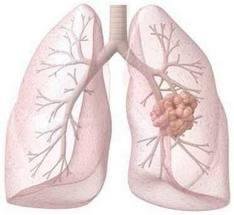

MSL exclusive Medical equipment knowledge sharing!
Watching a lot of medical equipment news and learning some knowledges of medical equipment. All the hardworking just to be a profesional medical equipments supplier and service better for you. We hope the information about medical we provide could helps you to choose your suitable products.
|
What do you know about lung cancer symptoms Clicks:Updated:2018-05-30 14:05:50 |
|
The clinical manifestations of lung cancer are relatively complex. The presence or absence of symptoms and signs, the severity of the symptoms, and the appearance of lung cancer depend on the location of the tumor, the type of pathology, the presence or absence of metastases, and the presence or absence of complications, and the degree of response and tolerability of the patient.
Early symptoms of lung cancer are often mild and may even be without any discomfort. Central lung cancer symptoms appear early and heavy. Peripheral lung cancer symptoms appear later and are lighter, even asymptomatic, and are often found during physical examination. The symptoms of lung cancer are roughly divided into: local symptoms, systemic symptoms, extrapulmonary symptoms, infiltration and metastasis.
(a) Local symptoms
Local symptoms refer to the symptoms caused by stimulating, blocking, infiltrating, and compressing tissue when the tumor itself grows locally.
1. Cough
Cough is the most common symptom, with coughing as the first symptom accounting for 35% to 75%. Cough caused by lung cancer may be associated with changes in bronchial mucus secretion, obstructive pneumonia, pleural invasion, atelectasis, and other intrathoracic complications. When the tumor grows in the bronchial mucosa above the segment with a large diameter and is sensitive to external stimuli, it can produce coughs similar to foreign body-like stimuli. The typical manifestation is paroxysmal stimulant dry cough, and general cough drops are often difficult to control. When tumors grew below the segment of smaller bronchial mucosa, there was no obvious cough or even cough. For smoking or patients suffering from chronic bronchitis, if the cough is aggravated, the frequency is changed, and the nature of the cough changes, such as a high-pitched metal tone, especially in the elderly, the possibility of lung cancer must be highly vigilant.

2. Sputum blood or hemoptysis
Sputum with blood or hemoptysis is also a common symptom of lung cancer, which accounted for about 30% of the first symptoms. Due to the rich blood supply of tumor tissue, the texture is brittle, hemorrhage due to blood vessel rupture during coughing, and hemoptysis may be caused by local tumor necrosis or vasculitis. The characteristics of hemoptysis of lung cancer are intermittent or persistent, repeated small amounts of sputum with bloodshot spleen, or a small amount of hemoptysis, even due to large blood vessel rupture, large cavitation or tumor rupture into the bronchus and pulmonary blood vessels resulting in uncontrolled large Hemoptysis.
3. Chest pain
With chest pain as the first symptom, about 25%. Often manifested as irregular chest pain or dull pain. In most cases, peripheral lung cancer invading the parietal pleura or the chest wall can cause sharp and intermittent pleural pain, and if it continues to develop, it will develop into constant pain. Mild chest discomfort that is difficult to locate is sometimes associated with central lung cancer invading the mediastinum or involving the blood vessels and peribronchial nerves, whereas 25% of patients with malignant pleural effusion complain of dull chest pain. Continuing sharp and severe chest pains that are not easily controlled by drugs often suggest extensive pleural or chest wall invasion. Sustained pain in the shoulder or thoracic region suggests a possible extravasation of the tumor near the mediastinum.
4. Chest tightness, shortness of breath
About 10% of patients have this as the first symptom, more common in central lung cancer, especially in patients with poor lung function. Causes of breathing difficulties mainly include: 1 late lung cancer, mediastinal lymph node metastasis, oppression of the trachea, carina, or the main bronchus, there may be shortness of breath, and even suffocation symptoms. 2 When a large volume of pleural effusion oppresses the lung tissue and severely shifts the mediastinum, or when there is pericardial effusion, chest tightness, shortness of breath, and difficulty breathing can also occur, but symptoms can be relieved after pumping. 3 diffuse bronchioloalveolar carcinoma and bronchial disseminated adenocarcinoma, so that reduced breathing area, gas diffusion dysfunction, leading to a serious imbalance of the ventilation / blood flow, causing dyspnea gradually increased, often accompanied by cyanosis. 4 Other: Including obstructive pneumonia. Atelectasis, Lymphatic inflammatory lung cancer, tumor microembolism, upper airway obstruction, spontaneous pneumothorax, and chronic lung disease such as COPD.
5. The sound is hoarse
There are 5% to 18% of lung cancer patients with sonar as the first complaint, usually accompanied by cough. The sonar usually indicates that the direct mediastinal invasion or lymph node enlargement involving the ipsilateral recurrent laryngeal nerve causes the left vocal cord paralysis. Vocal palsy can also cause different degrees of upper airway obstruction.

(b) Systemic symptoms
1. Fever
The initial symptoms accounted for 20% to 30%. There are two causes of fever caused by lung cancer. One is inflammatory fever. When a central lung cancer tumor grows, it often blocks the segment or opening of the bronchus, causing the corresponding lung or lung obstructive pneumonia or atelectasis and fever. At about 38°C, rarely exceeding 39°C, antibiotic treatment may work, shadows may absorb, but due to poor drainage of the secretions, often repeated attacks, about 1/3 of patients can repeatedly develop pneumonia in the same place in a short time. Peripheral lung cancer is often feverish when it is caused by inflammation caused by tumor compression in the adjacent lung tissue. The second is cancerous fever, which is mostly caused by tumor necrotic tissue being absorbed by the body. Such fever and anti-inflammatory drugs are ineffective, and hormones or steroids have a certain effect.
2. Eradication and cachexia
In the late stage of lung cancer, the loss of appetite due to infection, pain, increased tumor growth and toxin consumption, as well as increased levels of cytokines such as TNF and Leptin in the body can cause severe wasting, anemia, and cachexia.
|

Address:85th, Baiyun Road, Shiqiao Street, Panyu District, GuangZhou City Sitemap
Tel:+86-20-84899760 Email:Cindy@medmsl.com / cindy@medicalequipment-msl.com Skype:msl_saler01 Mob:+86 138 2644 8637

Connect us in Whatsapp or Facebook Messenger

Messenger
